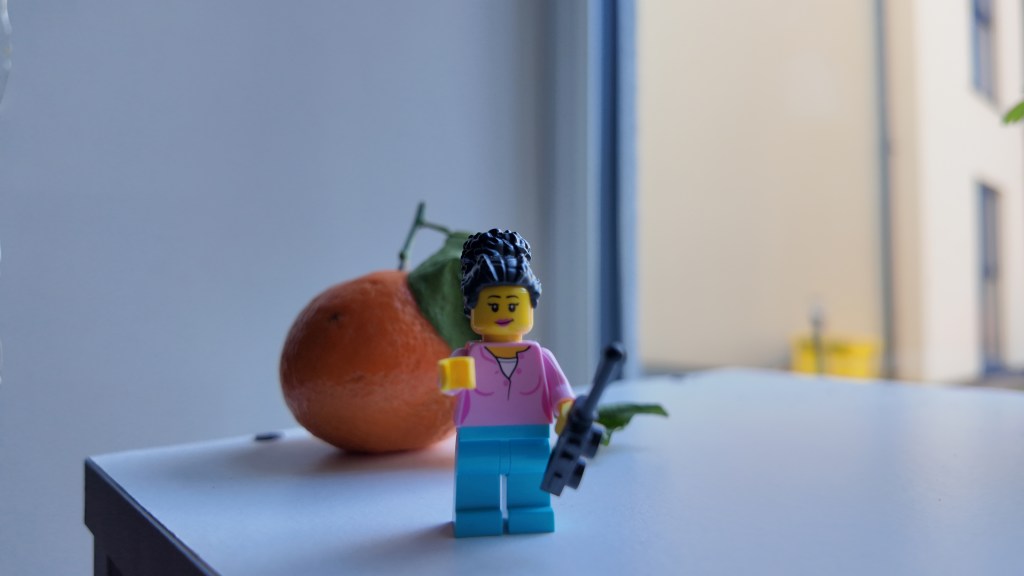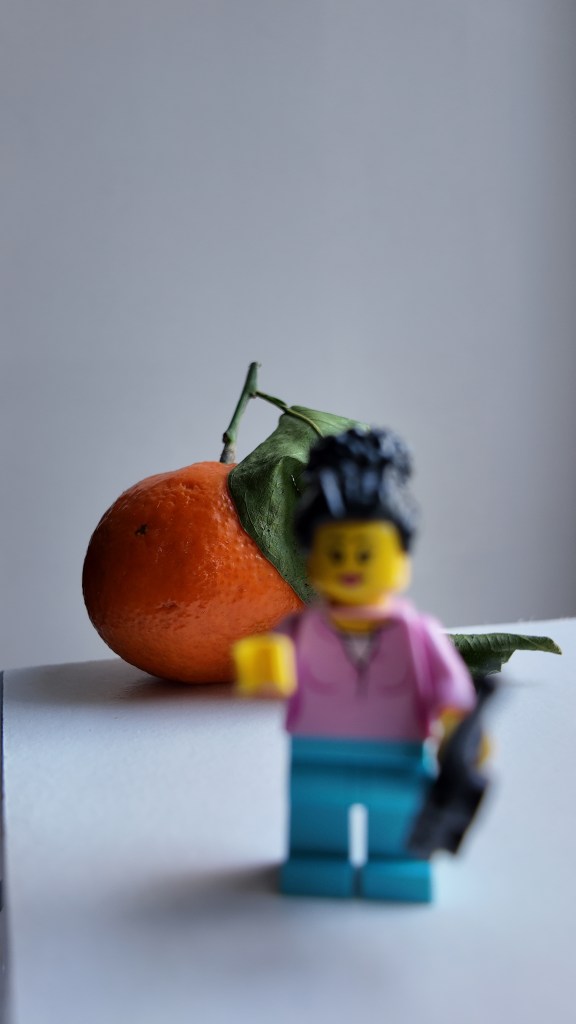Verdict
The ability to create good quality video in portrait orientation sets this camera apart from its predecessor, and is well-suited to vloggers and content creators.- Bigger and better screen
- Portrait shooting available
- Larger sensor
- Easy to change between portrait and landscape shooting
- Improved autofocus
- No built-in storage
- Image resolution and quality is lacking
- Expensive option
It’s been some time since I first looked at the DJI Pocket 2, but the newer, improved Osmo Pocket 3 certainly made an initial impact. The DJI Osmo Pocket 3 is a versatile pocket-sized gimbal camera suitable for vlogging and content creation, and remains the latest of its type from DJI.
Improvements over its predecessor include a larger sensor, 4K video at 120fps in Slow Motion, a third microphone and faster autofocus, but the most obvious change is its larger touch and rotatable screen, making the system more user-friendly and enjoyable.
The standalone DJI Osmo Pocket 3 retails for $519 / £489, and comes with a Type-C to Type-C PD Cable, a Osmo Pocket 3 Protective Cover, a DJI Wrist Strap, and a Osmo Pocket 3 Handle With 1/4″ Thread.
I received the Osmo Pocket 3 Creator Combo, which retails for $669/ £619 GBP, and includes the Osmo Pocket 3, a Type-C to Type-C PD Cable, a Osmo Pocket 3 Protective Cover, a DJI Wrist Strap, a Osmo Pocket 3 Handle With 1/4″ Thread, a DJI Mic 2 Transmitter (Shadow Black), a DJI Mic 2 Windscreen, a DJI Mic 2 Clip Magnet, a Osmo Pocket 3 Battery Handle, a Osmo Mini Tripod, and Osmo Pocket 3 Carrying Bag.
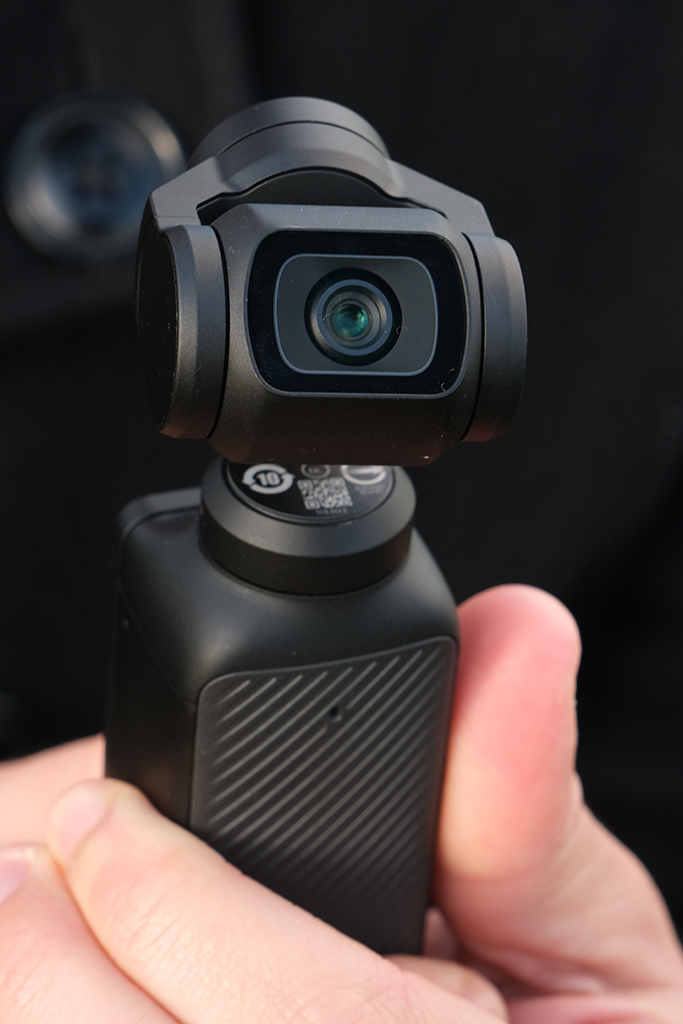
DJI Osmo Pocket 3 at a glance:
- Standalone: $519/ 539 EUR/ £489
- Pocket sized and lightweight
- Creator Kit and extra accessories available
- 1-inch CMOS sensor
- 2-inch full-color OLED rotatable touchscreen
- 4K video up to 120fps in 16:9
- Supports MicroSD cards up to 512GB
- www.dji.com
DJI Osmo Pocket 3: Features
The DJI Osmo Pocket 3 features a 20mm f/2.0 lens and can capture images and video in 16:9, 9:16 and 1:1 ratio. As well as up to 4K 120fps 16:9 video in Slow Motion, and 4K 60fps in normal video mode. When fully charged, it can record up to 116 minutes of 4K/60fps footage or up to 166 minutes of 1080p footage. However, you’ll need a MicroSD card to use the camera, as there is no internal storage. MicroSD’s up to 512GB are supported.
The Pocket 3 features a range of shooting, gimbal and rotational speed modes that can be changed depending on subjects and scenarios.
Creative modes:
| SpinShot | Rotates the camera rotates the camera 90-180°. |
| Motionlapse | From sunrises to city traffic, capture the surreal flow of time. |
| Digital Zoom | Up to 4x digital zoom lets you get closer in any shot. |
| Panorama | Give sweeping landscapes and scenes the full detail. |
Gimbal modes:
| Follow | Suitable for most scenarios, good for vlogs and selfie video as the camera follows the subject. |
| Tilt locked | Horizon line is level and great for scenarios with camera movements like push in, pull out and pan actions. |
| FPV | Camera rotates freely and follows device movement – most suitable for creative shots. |
Rotational speed:
Can change the Rotational Speed setting depending on the level of activity.
| Standard | Moves slowly for smooth video. |
| Responsive | Moderate speed suitable for most scenarios. |
| Sport mode | Abrupt movement and screen shake effect suitable for fast moving objects. |

Whilst the camera is straightforward to use, and most features relatively so, how useful the above features are will depend on what you are filming or creating. Many users probably won’t use Spinshot, and as you will find in the section below, 4x zoom isn’t even available in all settings.
The Active Track feature is improved; with Active Track 6.0 automatic facial recognition and dynamic framing have been added. Dynamic Framing helps you create amazing footage with great composition – with built-in golden ratio composition that locks the subject and keeps it within frame for aesthetic footage. Both of these work well and haven’t experienced any issues or lag. Although, when using Active Track, if the subject is quite small and in a busy surrounding, you might find it easier for the gimbal to lose tracking.
Full Pixel Fast Focusing is a new feature that locks your subject in focus. Within Pro mode when on the normal video setting, there are three focus mode options. Single, Product Showcase and Continuous. Product Showcase focuses on the foreground, which is great for creative depth of field effects and for doing what the feature states – showing products or objects close to the camera. If you are a creator who reviews or shows a lot of products, this is a great feature for you. Continuous mode picks up and changes focus on the centre of the screen, which is good if you are doing a range of different activities and actions in your videos, or capturing a lot of moving subjects. Single is suitable for motionless subjects and is likely to be the least used option of the three.
The DJI Mimo app, available for iOS and Android from the DJI site, gives you the option for recording, processing and editing photo and video files on your phone. As well as using the Livestream feature, which allows you to stream to Facebook and YouTube.
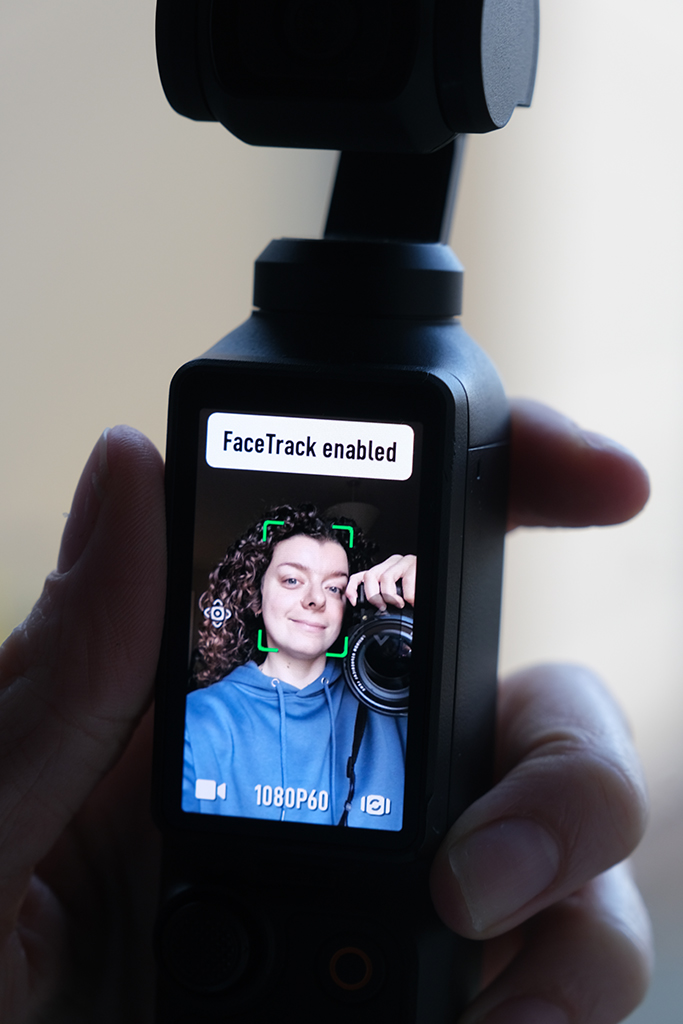
DJI Osmo Pocket 3: Build and handling
The Osmo Pocket 3 is lightweight at only 179 grams and small enough to fit in its namesake, a pocket (dimensions: 139.7×42.2×33.5 mm).
The camera body is a similar style to the Pocket 2 and is nice to hold, although just slightly heavier and larger. It looks and feels like it is a solid, good-quality build. It contains a handle with a tiny gimbal camera, small joystick, and power/recording button. A small red light beneath the screen signals recording. Overall, the larger screen is the obvious main difference in the body from the Pocket 2, and makes the camera much easier to use and view results. I found it quite easy to use the screen for changing settings, but some might find it better to use the DJI Mimo app.
The screen rotates and you can switch between portrait and landscape shooting seamlessly. There is an option with the settings to keep the orientation at portrait or landscape – regardless of which way the screen is rotated, whilst an option to be able to switch between the two. But, the orientation doesn’t switch whilst recording. In the settings, you can also change whether the joystick controls your zoom or gimbal axis.

The Pocket 3 has 3 microphones, which are said to reduce wind noise and create omnidirectional sound and immersive audio. Plus, a USB-C port for charging and data transfer. Connectivity is also available through Bluetooth and WiFi.
The Pocket 3 comes with a larger 1300mAh battery than its predecessor (875mAh) and faster charging, reaching 80% in approximately 15 minutes. It offers 166 minutes of continuous recording at 1080p, but combined with the battery handle extension (which has a built-in 950mAh battery), it increases the operating time by approximately 62%.
The mounting of accessories within the Creator kit, like the mini tripod, is done through the Osmo Pocket 3 Handle With 1/4″ Thread attachment. The DJI Mic 2 transmitter is a clip-on microphone, as well as magnetic. I have found the accessories easy to use and fit well together, with no fear they would detach in use. All accessories fit within the carry case that is about the size of a small make-up or toiletries bag, which makes it great for travel.
Other creative accessories – such as a Magnetic ND Filters Set, Black Mist Filter and Expansion Adapter, are also available at an additional cost. The Expansion Adapter looks like a great option if you want to transform the Pocket 3 into an action camera, as it can fit an action camera port. However, it’s still not waterproof.

DJI Osmo Pocket 3: Performance and image quality
Despite improvements in the rest of the camera, the Osmo Pocket 3 only captures images up to 3840×2160 in 16:9, approximately 9.4 MP resolution (3072:3072 in 1:1 ratio). This is, in fact, a lower resolution than the Pocket 2, at 9216×6912. Images can be recorded in DNG RAW format as well as JPEG, allowing for options when editing.
Normal video recording quality continues to be the same, at 4K 60fps. But an improvement of 120fps at 4K in Slow Motion mode makes it much better to capture detail in slow motion than the Pocket 2’s 1080p 60fps slow motion recording.
The ability to capture in different orientations, including the new portrait mode (up to 3K/60fps in 9:16 portrait and 1:1), showcases the move towards prioritising content creation and social media video making. Although it’s a shame you don’t get the full 4K in these orientations, the quality of footage up to 3K will be more than enough to create good-quality content for social platforms. It’s worth noting, though, that Low Light and Slow Motion modes are only available in landscape orientation, and haven’t yet been extended to portrait.
Video quality overall is great, but images are just ‘ok’. I wouldn’t be rushing to trade in my smartphone or digital camera any time soon for this. The Pocket cameras are not necessarily known as photography cameras, so the Pocket 3 overall would be much better suited for video focused work. It does however produce better images and video resolution than the likes of the Insta360 GO 3 that I recently reviewed.
Details in photos are quite clear, but you start to lose a lot of detail and sharpness with any cropping or zooming in. Colour and exposure of video and photos are well balanced and adapt well to changing light sources and directions.
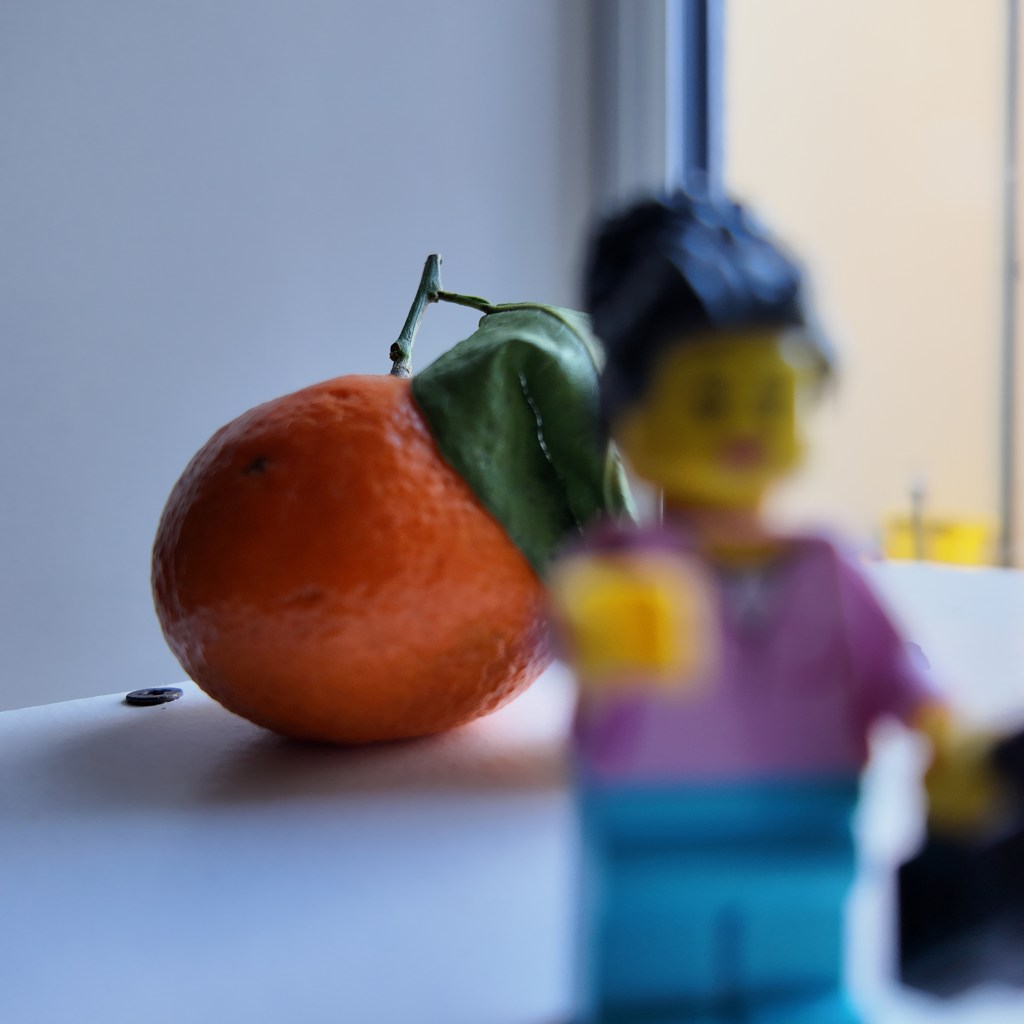
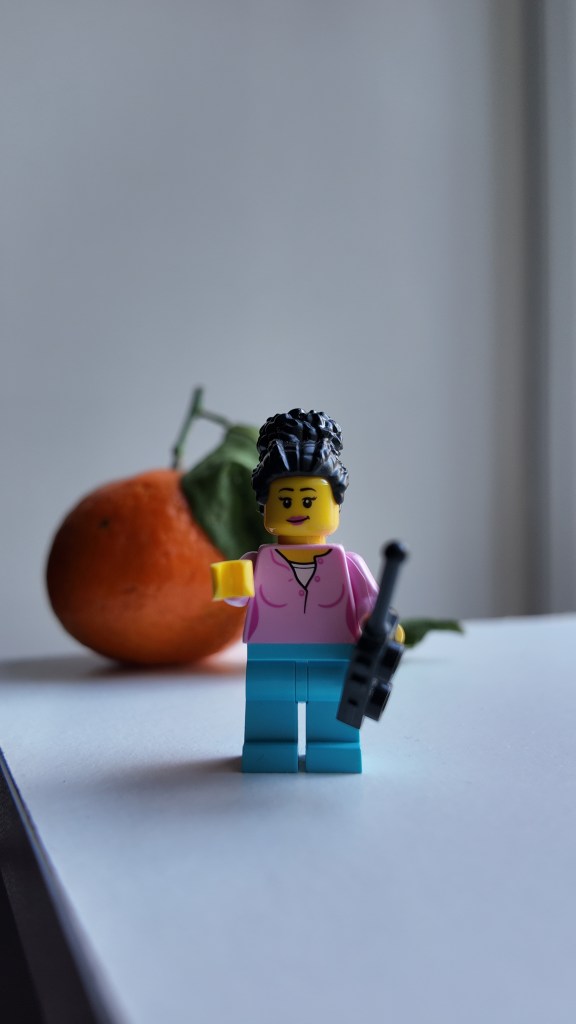
As expected, the gimbal and three-axis mechanical stabilisation are excellent. There is no shake when walking, although, depending on which setting you have rotational speed in, you still get some bounce and movement. Movement is smoothest when the rotational speed is set to slow.
The new sensor captures a lot of detail and performs well in low light. Having been tested in dark exhibition spaces, the camera copes and adjusts well even in normal modes. The new Low Light mode also helps. Parameters can also be manually changed in the Pro sidebar to adjust as you see fit.
However, the zoom is quite disappointing. 4x zoom is available, but only in 1080p video mode, and when fully zoomed in you start to lose detail and the image almost becomes quite pixelated. In higher resolutions, lower amounts of zoom are available: 3x in 2.7K, 2x in 4K in video, and 2x in photo.
Audio is good, but it does pick up some background noise when speaking. If it’s windy, you can hear some muffled wind noise, too. The Mic 2 works really well, even when the subject is being recorded from a distance. The mic captures the speaker’s audio clearly without much, if any, background or wind noise. Two mic transmitters can be set up with the Osmo Pocket 3, so in situations where there are two speakers, e.g. in a vlog or interview, this would be a great set up. Along with face tracking, if you are recording yourself or someone else, you can ensure a great video that focuses on you whilst speaking. The Pocket 3 is also compatible with other external digital USB-C microphones that support 48K/16bit.

Verdict
For the hefty price increase on the Pocket 2, and the price difference compared to other cheaper cameras on the market, is it worth it? For only slightly better video quality and reduced image quality than the Pocket 2, probably not. However, the better battery and the ability to create good-quality video in portrait orientation are what set this camera apart from the Pocket 2. The style of this camera versus a typical action or vlogging camera is well-suited and more convenient for vloggers and content creators – especially with the larger rotating screen on the handle. If you want to capture interviews or audio on the go for your vlogs, then likewise, with the mic transmitter, this is a great option.
Key features, such as Active Track 6.0 and facial recognition, are noticeably improved; they work really well and make a great addition to elevate your content. However, if you are looking for something that captures the action with waterproofing and provides extra action accessories that GoPro and even other DJI cameras can provide, it’s better to look in that direction.

Related reading:
- Best action camera to buy
- Best smartphones for video
- Best vlogging tips and how to get started
- How to make great videos for YouTube with your camera
- How to start monetising your video content


